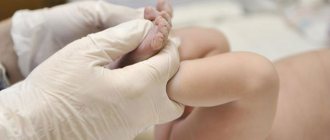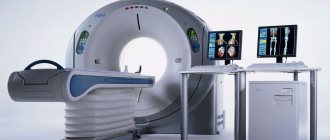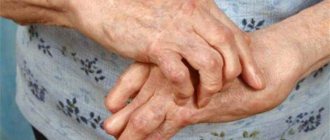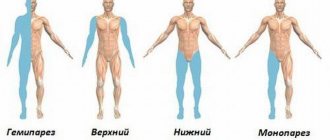Psychovegetative syndrome is characterized by the fact that it can include a large number of different symptoms arising from many systems and organs. Such signs are so diverse that a person can go to doctors for a long time to find out the diagnosis. But most often, numerous studies are not able to identify any pathology, and in this case, doctors recommend that the patient consult a psychoneurologist, suspecting the presence of a psychovegetative syndrome. So what is it?
Features of the manifestation of psychovegetative syndrome
This pathology is manifested by heart ailments, headache, increased sweating, nausea, dizziness, heaviness in the stomach, difficulty urinating, and sensitivity to cold. All this is accompanied by an anxious, depressed and irritable state, internal restlessness, various phobias, apathy and insomnia. A thorough examination shows that all organs are absolutely healthy, and all symptoms are false.
Conditions of occurrence - who is at risk?
Adolescents, children, and young adults are at risk of developing the disorder. Elderly people and people over 40 years of age are less likely to suffer from the syndrome. Women during menopause are at risk.
The occurrence of the syndrome is associated with the development of a young person during adolescence. If the development of the body and the functioning of the endocrine system do not correspond to each other, the manifestation of psychovegetative dystonia is possible.
Hereditary factors play a large role in the development of the disease. The disorder may be familial. If it is caused by a hereditary factor, it can make itself felt from early childhood.
At the age of 3 years, attacks accompanied by convulsive muscle contractions are possible. Observation of psychovegetative syndrome may indicate the development of epilepsy. During a seizure in childhood, the skin turns blue, the child begins to cry and sounds similar to barking.
The development of vegetative dystonia can stop and be compensated over time. But even in such cases, the relatively healthy state of the body is not stable. The disorder can recur again at the slightest emotional stress, anxiety or stress.
Physical labor and sudden changes in climatic conditions are contraindicated for patients. The syndrome can manifest itself with renewed vigor with the development of somatic diseases and hormonal changes.
A previously healthy person may suffer from psychovegetative syndrome after prolonged stress, various extreme events and situations.
Women are more susceptible to autonomic function disorders, since pregnancy, lactation, menopause, and premenopause cause sudden hormonal changes.
Psychovegetative syndrome is often associated with cerebrovascular disorders, such as cerebral atherosclerosis, TIA and other vascular disorders.
Psychovegetative syndrome is caused by a lack of serotonin production. It is the metabolic disorder of this substance that becomes a favorable biochemical prerequisite for the development of vegetative dystonia.
Causes
Psychovegetative syndrome manifests itself due to the constitutional characteristics of a person, mental and somatic disorders, under the influence of hereditary factors, as well as as a result of organic damage to the nervous system.
This disease can manifest itself due to hormonal changes in the body, psychosomatic diseases (bronchial asthma, hypertension, etc.), psychophysiological changes (acute and chronic stress), diseases of the nervous system, neuroses, mental disorders, and some occupational diseases.
Such reasons lead to the occurrence of vegetative dystonia, which is often accompanied by panic attacks.
Specialist consultation
Counseling is required if anxiety symptoms last more than three months.
Currently, clinical protocols for providing medical care to patients with various diseases are posted on the website of the Ministry of Health of Ukraine.
Clinical protocol of the Ministry of Health of Ukraine for the provision of medical care for neurocirculatory dystonia
From the point of view of a cardiologist, I would like to consider in more detail the protocols for the provision of mandatory and additional medical care to patients with neurocirculatory dystonia (Order No. 436 of 07/03/2006 “On approval of protocols for the provision of medical care in the specialty “Cardiology”). The list of mandatory examinations, along with the collection of complaints, anamnesis and clinical examination, includes measurement of blood pressure, ECG, EchoCG, chest x-ray, exercise tests and laboratory tests (general blood count, urine test, ALT, AST, bilirubin, creatinine, cholesterol, blood glucose). Daily blood pressure monitoring and ECG are classified as additional research methods.
Mandatory medical care includes beta-blockers, and for symptomatic arrhythmias - antiarrhythmic drugs and... that's it. This is what limits the treatment by cardiologists of “a polyetiological disease, the main symptoms of which are instability of the pulse, blood pressure, cardialgia, respiratory discomfort, vegetative and psycho-emotional disorders of vascular tone, etc.”
Clinical protocol of the Ministry of Health of Ukraine for the provision of medical care for vegetative-vascular dystonia
And in accordance with the clinical protocol for providing medical care to patients with vegetative-vascular dystonia (Order No. 487 of August 17, 2006 “On approval of protocols for providing medical care in the specialty “Neurology”), this disease should already be treated by a neurologist, family doctor, or therapist.
VSD is characterized as “a polyetiological disease, the clinical manifestations of which are caused by an imbalance in the functions of the sympathetic and parasympathetic parts of the autonomic nervous system, which are manifested by a variety of permanent and paroxysmal symptoms, especially during physical and emotional stress, instability of pulse, blood pressure, increased body temperature, cephalalgia, cardialgia, emotional lability, orthostatic reactions, panic disorders.”
In this case, the scope of the examinations is already more varied and again includes the collection of complaints and anamnesis, but it is also expected to be examined by specialists of related specialties, such as a therapist, cardiologist, neurologist, endocrinologist, otolaryngologist, ophthalmologist. Measurement of blood pressure, ECG, EEG, EchoCG, and laboratory tests are mandatory.
How is it suggested to treat a patient with VSD? In this case, the neurologist may already prescribe sedative, vegetotropic tonic therapy (adaptogens), α- or β-blockers, antihypertensive drugs, saluretics, antidepressants, nootropics, venotonics, vitamin therapy, antiparoxysmal drugs. A worthy place is given to non-drug treatment methods, especially psychotherapy and physical activity.
Clinical protocol of the Ministry of Health of Ukraine for providing medical care for panic attacks
And only in clinical protocols for the provision of medical care to patients with panic disorders (Order of the Ministry of Health of Ukraine No. 59 of 02/05/2007 “On approval of protocols for the provision of medical care in the specialty “Psychiatry”), the main attention is paid to eliminating the psychotraumatic situation, which led to the development of vegetative paroxysmal states with an emphasis on the cardiovascular system.
An interesting fact is that psychiatrists in the process of differential diagnosis suggest, first of all, to exclude endocrinological disorders in the patient (hypo- and hyperthyroidism, hypoglycemic state in diabetes mellitus), as well as angina pectoris, arrhythmia, hypertension, chronic bronchitis and bronchial asthma, epilepsy, hypothalamic disorders, withdrawal syndrome, alcoholism or drug addiction, hormonal disorders associated with pathology of the adrenal glands, attacks of hypotension or other organic lesions caused by infection or injury.
The comprehensive clinical diagnostic program includes clinical-anamnestic, psychodiagnostic and clinical-psychological examination methods, as well as instrumental and laboratory examination methods (it is not specified which ones), if necessary, consultation with other specialists to exclude somatic diseases.
How is a panic attack treated in accordance with the treatment standards of the Ministry of Health of Ukraine? Treatment of panic disorder includes pharmacological, psychotherapeutic and psychosocial interventions and combinations thereof.
What pharmacological treatment is recommended for patients with panic disorders? At the stage of relieving a panic attack, in accordance with the order of the Ministry of Health of Ukraine, the leading role in the treatment of panic disorders belongs to antidepressants, β-blockers and benzodiazepines.
Benzodiazepines are symptomatic drugs to relieve an attack. Both typical benzodiazepines (seduxen, phenazepam, etc.) and atypical ones (clonazepam, alprazolam) are used. The duration of use of benzodiazepines should not exceed 3-4 weeks, as “drug dependence” can form, and a lot of adverse reactions can be observed - withdrawal syndrome, impaired cognitive functions and concentration, muscle relaxation, drowsiness, etc.
A fundamentally new approach to the treatment of patients with vegetative crises was the creation at the Research Institute of Pharmacology named after. V.V. Zakusov RAMS of the original selective non-benzodiazepine anxiolytic Afobazole. The appearance of the drug was preceded by the development of a completely new and original concept of the mechanisms of anxiolytic action. Scientists have suggested that it is possible to selectively eliminate anxiety without affecting other mental functions. Afobazole is not a benzodiazepine receptor agonist. Its action prevents the occurrence of membrane-dependent changes in the GABA receptor complex that occur during the development of an anxiety disorder [1, 8]. It is important that the drug exhibits a pronounced anxiolytic and mild stimulating effect already on the 5th–7th day of administration with a passive phenotype of an emotional-stress reaction and, unlike benzodiazepines, does not have a sedative effect with an active type of behavior under emotional-stressful conditions. According to experimental studies, it has been established that Afobazole has an anxiolytic effect, which, when using a wide range of doses, is not accompanied by hypnosedative and muscle relaxant properties, addiction syndrome, as well as a negative effect on indicators of attention and memory.
What is the evidence base on the effectiveness of Afobazole?
The results of randomized comparative clinical studies of the effectiveness and tolerability of Afobazol as an anxiolytic agent in patients with both severe neurotic disorders (generalized anxiety disorder) and relatively mild conditions (neurasthenia, adaptation disorders), conducted in leading clinics of the Russian Federation, showed that Afobazol is a reliable anxiolytic and is not inferior in effectiveness to diazepam and oxazepam [1, 8]. At the same time, Afobazole, unlike benzodiazepines, is characterized by the absence of addiction and withdrawal syndrome upon discontinuation of use [1, 8].
What is the evidence base on the effectiveness of Afobazole in Ukraine?
In 2007, a multicenter open comparative study of the therapeutic efficacy and tolerability of the new non-benzodiazepine anxiolytic Afobazole in the treatment of non-psychotic mental and psychosomatic disorders accompanied by anxiety (neurasthenia, generalized anxiety disorder and adaptation disorders) was completed in Ukraine and its results were published [9].
Clinical testing was carried out in 11 research centers in Ukraine on 300 patients (leading researchers Professor A.K. Napreenko and Professor N.A. Maruta).
It was concluded that the drug Afobazol (10 mg tablets produced by JSC Shchelkovo Vitamin Plant, Russian Federation) has a significant independent anxiolytic effect (exceeding the therapeutic effect of non-drug therapy by an average of 37%), potentiates the effect of psychotherapy in various forms of neurasthenia, disorders adaptation and generalized anxiety disorder, as well as psychosomatic disorders. The beginning of the reverse development of the main symptoms of these non-psychotic mental disorders when using Afobazole is observed already from the 5th–7th day of treatment, and a persistent significant improvement is observed by the 30th day of therapy [9]. In addition, it is advisable to differentiate the dose of Afobazole from 15 to 60 mg per day, depending on the clinical form and severity of the disease. The most effective and well-tolerated daily doses are 30–40 mg. Afobazole potentiates the effect of some somatotropic and neurotropic drugs, which allows the latter to be used in smaller doses, and also contributes to the rapid elimination of a number of somatic and neurological symptoms [9]. It turned out that the drug is safe for the age group of patients 18 years and older, and does not cause undesirable changes according to laboratory parameters. Afobazole is well tolerated by patients from different social strata of the population, including those with non-psychotic mental disorders occurring against the background of exogenous-organic cerebral changes and comorbid somatic diseases. Afobazole has good indicators of interaction with drugs prescribed by internists and neurologists, does not cause withdrawal symptoms, as well as manifestations of drug dependence on it, as well as a decrease in the productive mental activity of patients. Afobazole is recommended for widespread medical use for non-psychotic mental as well as psychosomatic disorders accompanied by anxiety, both in inpatient and outpatient medical practice. The drug Afobazole as a protector in order to prevent these disorders can be recommended for people in stressful situations [9].
In the same 2007, at the Department of Cardiology and Functional Diagnostics of NMAPE named after. P.L. Shupik (Kiev) examined 30 patients with neurocirculatory dystonia aged from 19 to 46 years with the presence of severe psychosomatic disorders. All patients received beta-blockers nebivolol at a dose of 5–10 mg/day. or betaxolol at a dose of 10–20 mg/day. and additionally Afobazol (JSC Shchelkovo Vitamin Plant, Russian Federation) 10 mg 3 times a day for a month.
The study was conducted to study the effect of Afobazole on blood pressure, the state of the autonomic nervous system, as well as atrial and ventricular arrhythmogenicity in patients with NCD.
As a result of the study, a pronounced manifestation of anxiety and anxiety-depressive syndrome was revealed in all patients with NCD, which was confirmed by a high average score on the HARS anxiety scale and required appropriate pathogenetic treatment.
Analysis of the dynamics of HARS anxiety scale indicators showed that all of them underwent a significant reduction during treatment with Afobazole. Thus, the total HARS score decreased by 53.6% over 4 weeks of therapy, the mental anxiety score by 51%, and the somatic anxiety score by 56%. Thus, Afobazole acted equally on both mental and somatic components of anxiety.
When using Afobazole, stabilization of blood pressure was observed, as well as the balance of the sympathetic and parasympathetic autonomic nervous system, which is expressed in a decrease in the manifestations of heart rhythm disturbances such as supraventricular extrasystole and tachycardia, as well as ventricular extrasystole.
Afobazole is also well tolerated, which increases compliance with the therapy [4, 5].
Symptoms
If there is a suspicion of psychovegetative syndrome, its symptoms may be different. They can manifest themselves as the presence of various syndromes, which can only be treated comprehensively.
Cardiovascular syndrome is usually manifested by disturbances in the functioning of the heart (tachycardia, bradycardia), increased blood pressure, chilliness of the extremities, hot flashes, changes in skin color (cyanosis, pallor).
Cardiac syndrome is characterized by the occurrence of pain of various types or a feeling of discomfort in the precordial area. It is sometimes believed that angina pectoris manifests itself in this way, but in this case the pain does not go away even after taking nitroglycerin.
Also, with hyperventilation syndrome, a person may suffer from a feeling of lack of air, shortness of breath, and cough. Due to rapid breathing, the body begins to experience a lack of carbon dioxide, which is manifested by muscle spasms and paresthesia in the perioral region and distal limbs. Lack of air causes the patient to become faint - his vision begins to darken, weakness and dizziness appear.
Pain in the heart and abdomen occurs due to impaired motility of the gastrointestinal tract. A person loses his appetite and develops irritable bowel syndrome. In some cases, vomiting occurs, stool upset, and heaviness in the epigastrium.
Psychovegetative syndrome with cerebrovascular disorders is accompanied by headaches, a tendency to faint, noise in the ears and head, and dizziness. They arise due to cerebral angiodystonia, the basis of which is considered to be dysregulation of cerebral vascular tone of a hypotonic, hypertonic or mixed nature.
Psychovegetative syndrome is manifested by sexual dysfunction. In this case, in men, erection or ejaculation is impaired, and in women, anorgasmia or vaginismus occurs. Body temperature may rise or fall and chills may appear.
Essence
This is a common type of neurosis that affects a significant part of the world's population, with about 2 times more women suffering from panic attacks than men.
Those who suffer from panic attack syndrome usually rarely talk about it and are embarrassed by such mental manifestations.
Panic attacks are essentially invisible to others. Although a person who suffers from such attacks is frightened by everything during an attack, it seems that he looks like a person with a sick psyche, that everything is spinning, the ground is floating under his feet, and that those around him are talking about him and his shortcomings. This is one of the misconceptions. Everything that happens is, in fact, only in the head of the one who suffers from the phenomenon in question.
What is a panic attack?
Quite a lot of people suffer from panic disorders from time to time. Most often, this pathology develops at the age of 20-30 years and mainly in women.
Psychovegetative syndrome with panic attacks has the following symptoms:
- respiratory and vascular reactions are disrupted;
- thermoregulation and sweating change;
- blood pressure increases;
- Tachycardia occurs and heart rhythm is disturbed.
Such symptoms, occurring suddenly and without any reason, lead to the formation of emotional and affective disorders. In this case, unreasonable fear appears, reaching the point of panic. It happens that the first panic attack later develops into a specific fear - there is a fear of stroke, myocardial infarction, falling, loss of consciousness, madness, etc.
Between attacks, patients usually develop secondary psychovegetative syndromes. A person cannot be in a crowd, a store, too far from home, or, conversely, alone in an apartment. This leads to depression, social activity decreases, the patient loses interest in the world around him, fatigue and weakness increase, appetite decreases, and sleep is disturbed.
Postprandial hypotension
Postprandial hypotension is a sudden drop in blood pressure after eating, caused by changes in blood pressure during digestion. Symptoms include dizziness and fainting 15 to 90 minutes after eating. The disease occurs in adults over 60 years of age and in people with other ANS disorders.
During digestion, excess blood is sent to the stomach and small intestine, causing the heart to beat faster and stronger. Blood vessels away from the digestive system narrow. These actions affect blood flow throughout the body.
In people with postprandial hypotension, the heart doesn't beat as fast as it should and the blood vessels don't constrict as well, so blood pressure drops.
Diagnosis of the disease
To diagnose psychovegetative syndrome, a comprehensive examination is required. First of all, the doctor must exclude all somatic diseases that manifest themselves in a similar way.
High-quality diagnostics requires consultation with several doctors of different profiles. Interviewing the patient is considered very important. The doctor is obliged to ask him about all the sensations and find out all the subtleties of the manifestation of the disease.
During the examination, an electrocardiogram, computed tomography, MRI, and vascular Doppler sonography are often prescribed.
What diseases and situations are typical
Some life situations and diseases can provoke disorders in the functioning of the autonomic nervous system. These are chronic neurological and somatic diseases.
The reason may also be:
- the very fact of a long stay in the clinic;
- pregnancy;
- lactation;
- taking hormonal medications;
- puberty;
- menopause;
- premenopause;
- abrupt discontinuation of medications.
Physique features play an important role among the causes of the development of vegetative dystonia.
Treatment
If a psychovegetative syndrome occurs, it should be treated, if possible, without the use of medications. The patient is prescribed massage sessions, reflexology, and physical therapy. To reduce the manifestation of hyperventilation, it is recommended to carry out breathing exercises.
In case of acute manifestations of the disease, the patient is prescribed benzodiazepine drugs. For anxiety and depression with sleep disturbances, antidepressants with a sedative effect are prescribed. Drugs such as beta blockers are used for arterial hypertension, heart pain, and tachycardia.
It is important to lead a healthy lifestyle, strengthen the body, and apply treatment that strengthens the body. In many cases, a positive effect occurs after rational psychotherapy, during which they try to convey to the patient that he does not have a disease that threatens his life.
Spa treatment is also practiced, which effectively affects the patient’s body due to climate change.
Afferent Baroreflex failure
Afferent baroreflex deficiency causes fluctuations in blood pressure due to failure of the blood pressure sensitive nerves that transmit information to the brain. As a result, it alternates between being too high and too low. Symptoms:
- dizziness;
- fainting;
- headache;
- sweating;
- redness of the skin.
This condition occurs when the blood pressure-sensing nerves in the neck are damaged after cancer treatment, surgery, or radiation therapy. Occurs in people who have had a stroke, which affects the parts of the brain that transmit information about blood pressure.
May be the result of inherited disorders that affect the development of specific nerves.
Psychovegetative syndrome in children
In childhood, this disease is characterized by a combination of autonomic and psychoemotional disorders that arise due to various pathologies of the nervous system. The development of the disease is facilitated by instability of such vegetative parameters as temperature and blood pressure, as well as poor tolerance of mental and physical labor. The syndrome is quite often observed during hormonal changes during adolescence. The disease is treated with medicinal and non-medicinal methods.
Multiple system atrophy
Multiple system atrophy is a rare autonomic syndrome. It usually affects men and women over the age of 50. Progresses rapidly over 5-10 years. The condition causes progressive loss of motor function. Ultimately, the need to use a wheelchair arises.
There are two different types of this condition: the cerebellar type and the Parkinson's disease type. Diagnosis depends on the most severe symptoms at the time of assessment.
- People with Parkinsonian type have symptoms similar to Parkinson's disease, such as slow movement, stiffness, trembling, problems with balance, and coordination.
- With the cerebellar type - loss of coordination, difficulty swallowing, speech problems, trembling voice, unusual eye movements.
Find out more All about Prader-Willi, Labhart-Willi syndrome
This condition tends to progress faster than Parkinson's disease. Most people require walking assistance, such as a cane, walker, or wheelchair, for several years after symptoms begin.
Prevention
If you are ill, you should normalize your sleep and rest patterns and sleep at least eight hours a day.
Simple preventive measures help to avoid the appearance of psychovegetative syndrome and prevent its reoccurrence in the future. With their help, a person will be able to normalize his lifestyle and cope with minor deviations in the functioning of the body, which can develop into a disease.
First of all, it is necessary to normalize sleep and rest patterns. A person should sleep at least 8 hours a day. You also need to review your daily diet. It is recommended to include in your menu foods and dishes that can saturate the body with valuable substances. If necessary, you can take a course of vitamin therapy. A therapist or other highly specialized specialist will tell you which drug to choose for these purposes.
A person who is at risk needs to learn to protect himself from negative thoughts and emotions. He should be in a healthy environment. The potential patient's thinking should be positive. Excessive anxiety and stress will only contribute to the development of psychovegetative syndrome.












